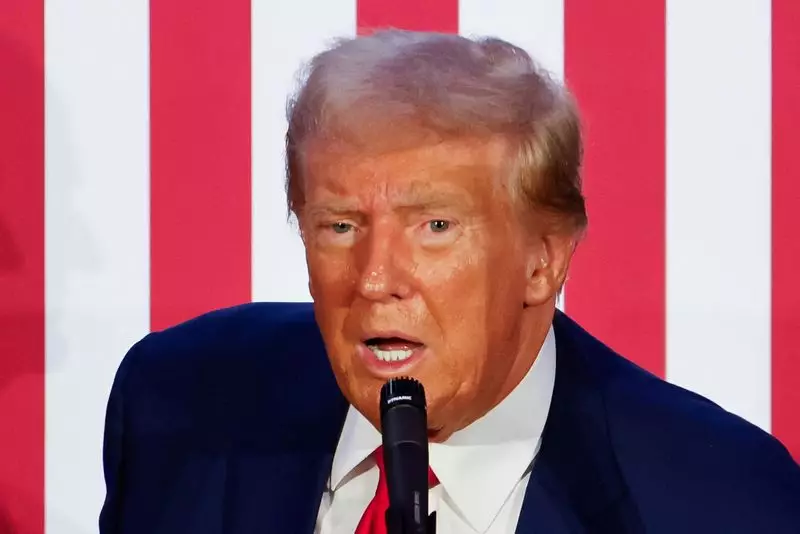As former President Donald Trump positions himself for another run at the White House, his economic strategy once again has the potential to influence the financial landscape significantly. Trump’s approach to tariffs could have far-reaching effects on corporate earnings, particularly for companies listed on the S&P 500. With sweeping proposals that introduce high tariffs on imports, analysts are beginning to evaluate the possible consequences for both domestic and global markets.
Trump’s recent tariff suggestions are notably aggressive, calling for a 10% to 20% tax on all foreign goods and a striking 60% levy on imports from China. These measures aim to protect American jobs, particularly in manufacturing, by addressing what Trump perceives as unfair trade practices orchestrated by foreign competitors, including nations with which the U.S. experiences substantial trade deficits like China and the European Union. However, the feasibility and consequences of such a large-scale implementation raise significant questions.
During his administration, Trump’s initial tariff policies ignited considerable tension, particularly with China. These ongoing disputes have framed the current narrative around trade, with President Joe Biden’s administration maintaining many of the existing tariffs. Current market analysts suggest that Trump’s revived tariff plans could mirroring his earlier strategies, which may reignite trade hostilities and alter the dynamics of U.S. trade relations.
Analyzing the potential financial impact, Barclays analysts have indicated that the proposed tariffs could result in a 3.2% decline in earnings for S&P 500 companies in the subsequent year. This prediction goes further, suggesting an additional 1.5% loss if retaliatory actions from other nations are factored in. While the direct correlation may appear slight, the analysts warn that secondary effects—such as increased consumer prices and inhibited growth—could exacerbate the situation for companies heavily invested in global supply chains.
Key sectors that may be disproportionately affected include materials, discretionary goods, industrials, technology, and healthcare. Each of these sectors relies extensively on cross-border trade. Disruptions stemming from elevated tariffs could lead to supply shortages and operational inefficiencies, ultimately impacting profitability.
Inflationary Pressures and Federal Reserve Response
Moreover, this proposed tariff framework could escalate inflationary pressures across the United States, as consumers face rising prices on imported goods. Should inflation begin to spike, the Federal Reserve may find itself in a nuanced position. While it has been anticipated that the Fed could reduce interest rates to stimulate the economy, an increase in tariffs may compel the central bank to maintain higher borrowing costs for an extended period to control inflation.
Barclays analysts anticipate that as trade policies evolve and economic conditions become more challenging, the Fed might be inclined to implement substantial rate cuts—potentially up to 100 basis points—if recessionary signs emerge. Such anti-inflation measures could have significant implications for fiscal policy and economic growth.
The Political Landscape and Path Forward
Following a recent presidential debate, current polling indicates a close race, with Trump’s opponent, Kamala Harris, maintaining a narrow lead. Regardless of the election outcome, analysts predict a continued divided Congress, meaning the next administration—whether led by Trump or Harris—may find advancements in policy hampered by legislative gridlock. In such an environment, the president might wield increased executive powers, particularly in setting tariffs and reshaping trade agreements, without the need for congressional approval.
While Trump’s tariffs are framed as tools for economic protectionism, their implementation poses significant risks not only to the S&P 500 but also to broader economic stability. The interplay between tariffs, inflationary trends, corporate earnings, and Federal Reserve policy will demand careful navigation by any incoming administration. As the election approaches, the implications of Trump’s tariffs warrant close scrutiny, as the potential for increased conflict in trade policy could shape the United States’ economic landscape for years to come.

